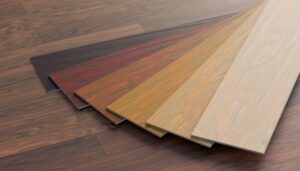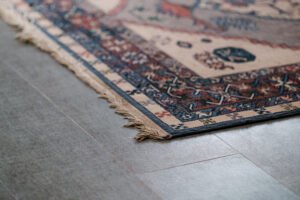How To Clean Flooring
It’s a sad reality because your floors, carpets, and rugs will eventually become dirty no matter how clean your house is. The flooring in your home can become rather messy due to everything you track in on your shoes, the natural accumulation of dust, crumbs accidentally dropped from the kitchen table, etc. The good news is that some upkeep goes a long way—mainly if you attack the filth in the most efficient method possible for each type of floor. So, how to clean flooring?
Standard Method of Cleaning Floors
It was cleaning the flooring in high-traffic areas, such as kitchens, dining rooms, bathrooms, entryways, and hallways, every one to three days, and mopping the floors once a week is a good rule of thumb for maintaining cleanliness in your home. While regular mopping is necessary to keep feet clean, it requires regular sweeping or vacuuming to preserve the finish and life of the flooring in good condition. It is because it removes dirt and grit that might cause damage to the floor when stepped on. When it comes to mopping, the most excellent time to clean is when the floor desperately needs it.
Most people believe they already know how to mop a floor, but a common mistake is forgetting to use a second bucket to rinse water, which is crucial—using simply a bucket of wash water and rinsing the mop in the same water used to wash the floor. Use two buckets instead of one for the detergent solution and another for the rinse water after finishing the detergent solution. Use a bucket for washing water and fill a sink basin with fresh water to rinse if necessary.
Traditional moist mopping continues to be the most effective method of cleaning many types of flooring. However, while flat mops are excellent for simple dust and light debris cleanup, only a good, complete weekly damp mopping with a quality cleaning solution can genuinely offer the deep-down cleaning that a floor requires.
Damp mopping is the most effective method for cleaning vinyl sheet flooring, ceramic or porcelain, and vinyl tile. On the other hand, you should not use water on any wood floor, nor should you use it on laminate, cork, bamboo, or any other type of flooring where the manufacturer has advised against contact with water. Adequately sealed wood or laminate floors may handle the occasional damp wipe, but we don’t require heavy mopping with water for these types of floors.
Different Types of Flooring and the Best Way to Clean Them
Giving your home a thorough cleaning is essential to make it a pleasant and healthy place, but taking care of your feet, especially if your home has a lot of each type of flooring that needs different kinds of maintenance, can seem like a lot of work. While cleaning the floors regularly is necessary, if you follow these suggestions, you will discover that your weekly cleaning will no longer be something you dread. We’ll show you how to properly clean every type of flooring in your home, whether primarily hardwood, carpet, tile, stone, or even a combination of all four.
The sort of flooring you have also impacted the cleaning method you use. Some mediums require more attention to detail while cleaning than others.
Consider the surface you are cleaning carefully to ensure you do not cause any damage. Follow these simple steps once you have identified what type of material you are dealing with:
 Laminate Floors
Laminate Floors
Clean the flooring with a vacuum, dust mop, or a lightly soaked mop. Never use soap-based detergents on the floor because they can leave a dull film on it, and avoid overwetting the surface. Using wax polish is also discouraged because it will make the floor slippery.
To eliminate markings and stains, dilute water and vinegar and apply it to the area. You should avoid abrasive cleaning products such as nylon scouring pads or steel wool, as they can scratch laminate.
Marks that are difficult to remove, such as shoe polish, can be removed with acetone-based nail polish removers or other mild solvents. The tried-and-true WD-40 is also effective.
Put felt pads and drip trays underneath plant pots to protect the floor from damage.
Tile Floors
Make a habit of vacuuming or sweeping your tile floors regularly to remove surface debris. After that, wipe the floor with hot water and mild detergent. And don’t forget to clean the grout, which is the porous material between each tile and is often composed of cement and sand. Grout can absorb dirt, grease, and other undesirable substances. Using a specific grout sealant, you can seal grout around twice a year to prevent debris from infiltrating it and causing damage. However, it is a time-consuming process, and most grout sealants require between 24 and 48 hours to dry after application, which is not ideal if you need to, you know, walk on your floors during the process.
As a result, regularly cleaning your grout and tile floors may be the best option. Use hydrogen peroxide and water mixed equally, and scrape the stains out using a toothbrush to remove them altogether. Applying baking soda and water mixed to the grout is a less intense technique for grout cleaning. Leave it on overnight, then scrub it off with a nylon brush the following day, vacuuming up the dried, flaked-off paste leftovers.
Ceramic and Quarry Tiles
Fortunately, they require very little maintenance! Before rinsing well with fresh water, cleaning should include sweeping and washing with a moderate detergent solution. Never use wax polish on your tiles since it will cause them to become slippery.
Another way is to use a steam cleaner. It is a quick and effective solution for cleaning sealed floors and tiles, and they use only water to complete the task.
Terracotta Tiles
Terracotta tiles mature within the first year following their installation. They require a particular cleanser, sealer, and polish, which are available from most flooring suppliers. Make sure you use the products specified for your tiles.
Vinyl Tiles
Brush or vacuum the floor with a soft brush, vacuum the floor again, then mop the flooring with water and mild detergent. After wiping, thoroughly rinse the area. You can remove scuff marks with a cloth dipped in neat washing-up liquid or white spirit, which you should rinse off.
Cork Tiles
Clean cork tiles factory-sealed with a damp mop and a washing-up liquid solution. Apply an acrylic or polyurethane sealer to add an extra layer of protection, especially in high-traffic areas such as the bathroom and kitchen.
Keep cork floors from becoming too damp, and avoid dragging appliances or furniture across them since this can harm the seal and protective coatings.
Wooden Floors
How to clean this type of flooring? Which method is ideal for cleaning your hardwood floors, whether or not your flooring has a seal? Are you unsure? Your finger is rubbing on the floor. If you notice a resultant smudge, this indicates that this floor is un-sealed, and you should avoid cleaning it with water because this might cause the wood to swell and distort. Is there no smudge? Because it is a sealed floor, cleaning it with a small amount of water is acceptable.
To begin, dry mop, sweep, or vacuum with a gentle nozzle to remove pet hair, dust, and debris from the surface. Use a specialized unsealed floor cleaning for unsealed flooring. After that, research online or call your local hardware shop to find what they suggest. Cleaning sealed floors with a damp mop and the appropriate cleaner for your type of seal is recommended. Water-based cleansers are acceptable because a surface finish will form a protective barrier. On the other hand, treated wood with a wood-penetrating finish can still absorb water. When you rub your hand along the surface of the wood, you should feel the grain and texture of the wood. It indicates that a wood-penetrating finish was applied.
To determine what type of finish your floors have, use a simple soap and hot water mixture, ensuring that no water pools on the flooring. Use a moist mop rather than a soaking wet one, and mop toward the wood grain. If a soapy film is left on the floors after cleaning, lightly buff the bases with a dry towel to remove it.
Linoleum
As with any other hard floor, the first step to clean this type of flooring is to vacuum, sweep, or use a dry microfiber mop to remove any debris, hair, or dust accumulated on the surface. If you live in a high-traffic area, you should do this every day or every other day.
Every week, combine 6-7 drops of mild detergent with a gallon of water, warm or hot, to thoroughly clean. A damp mop cleans the floor in portions using the mixture as a cleaning solution. Ensure the mop is wet but not dripping, as standing water can cause linoleum to become discolored. Remove the cleaning solution and replace it with cool water to finish mopping. Then, rinse the mop and wash the floors with simple water to eliminate soapy residue. Finally, dry your freshly cleaned flooring with a towel or cleaning cloth.
Stone
A stone floor is prone to staining, so you should constantly seal it with a resin sealer to prevent this. After thoroughly vacuuming the gravel, apply a mild detergent solution before mopping it down.
If there is oil and grease on your stone, apply a proprietary spot-treatment stain remover for the stone to get rid of it.
 Rugs with a Flat Weave
Rugs with a Flat Weave
Most flatweave rugs can be vacuumed regularly on both the front and back of the carpet; read the care label or contact the maker if you’re not sure. When vacuuming sensitive rugs, work in small parts and use a floor head that produces little to no vibration.
Spot cleaning is the most effective method of dealing with spills. Blot wet spots with a paper towel. Do not rub them, as this will cause the stain to bleed or set in. For more difficult stains, the recommended method is spot cleaning with a light detergent and hot water.
Carpet with a Medium to High Pile
Using a turbo or electric power nozzle is the most efficient cleaning method to clean this carpet. In most cases, both are equipped with a regular revolving roller brush that cleans deep into the carpet’s fibers. By caressing the rug, you can determine how the weaving is going. Make sure you vacuum with the grain rather than against it to avoid damaging the carpet (this can cause breakage).
Shag Carpet
Those shag carpets and extremely fuzzy rugs are incredibly comfortable to walk on. However, they can be challenging to keep clean. (This is especially true because overzealous cleaning can quickly ruin them if you are not cautious!) Borrow or hire a steam cleaner for the most thorough and fail-proof cleaning (many hardware stores offer this service). However, a straight suction floor nozzle can gently go over the rug for routine maintenance-type cleaning. If your carpet is tiny and you have some outdoor space, you may take it outside. Hang it up and beat it with the head of a broom handle to remove dirt and dust particles.







